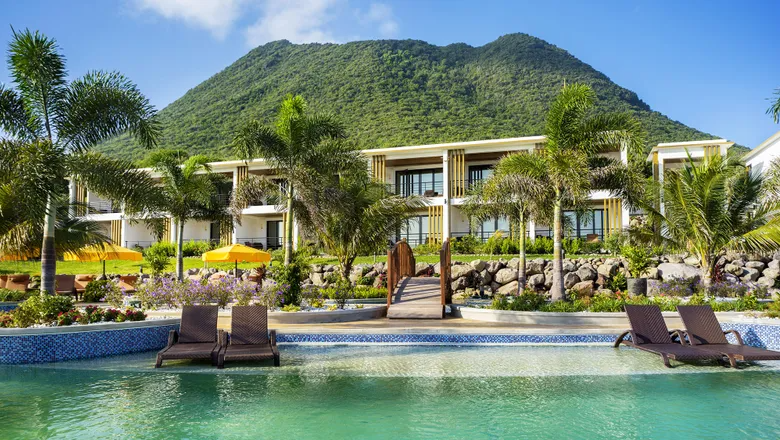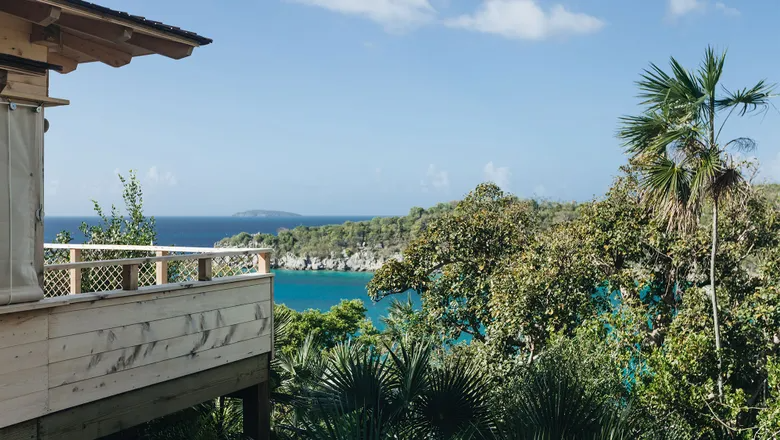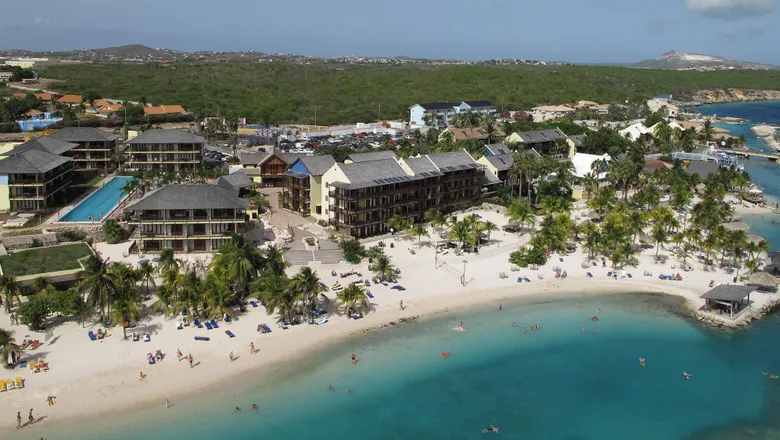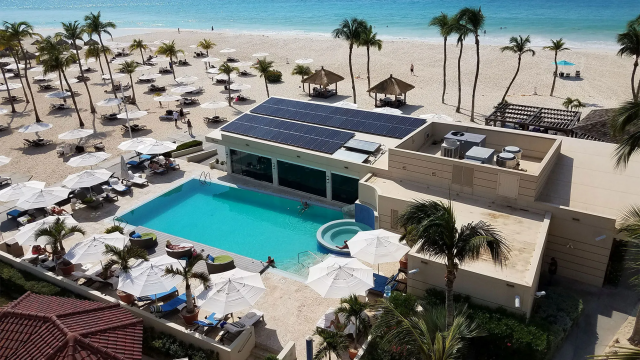By necessity or design, Caribbean resorts are going off-grid
2022-11-21From logistics to upfront costs, becoming a green, reduced-carbon resort is a challenge. But it’s one that quite a few Caribbean resort owners are not shying away from.
While some hoteliers across the region are doing their part by reducing or eliminating single-use plastics, utilizing local materials or offering farm-to-table dining, others are taking it much further, some going completely off the grid. Often, the owners are motivated by their personal environmental values.
Golden Rock Dive & Nature Resort on the island of St. Eustatius sits on a 40-acre hilltop, where a solar farm generates power to fully run the resort with its 32 guestrooms. That power, said resort CEO Peter Barnhoorn, generates 4 megawatts daily. On an average day, the resort uses 2 megawatts during the day and 1 megawatt at night.

But hurricanes such as the recent Ian are late-summer reminders that any utility can be one wind gust or flood away from being unavailable. As such, Golden Rock’s setup was designed to withstand a Category 4 hurricane.
One of the newest resorts in the Caribbean, the 14-suite Coulibri Ridge on Dominica, opened its doors in October, two miles from the local power grid. It boasts 100% power sufficiency via solar and wind energy and captures up to 200,000 gallons of rainwater stored in a network of cisterns and reservoirs built mostly underground. During construction, the resort only used rainwater to mix the concrete. The first building erected was a solar power plant.
“The objective set for Coulibri Ridge was to build and operate a resort in an exceptional natural setting offering sustainable, high-end comfort and amenities while being 100% off-grid and self-sufficient for electrical power and water supply,” said co-owner Dominique Marchand.
The Lovango Resort and Beach Club on St. John in the U.S. Virgin Islands is partially powered by a combination of solar and wind and is striving to be powered 100% by solar energy in the next two years. The hotel currently claims full sustainability on its septic and water systems, using a desalination system to convert seawater to potable water. It is also implementing a crusher system that turns glass bottles into sand to make concrete used on the island.

“By virtue of being on a private island, we knew from the start we would have to do this, and that’s part of the magic/appeal of Lovango,” said resort founder Mark Snider.
While some resorts like Lovango have no nearby power grid options, the Bucuti & Tara Beach Resort in Oranjestad, Aruba, sits right in the middle of conveniences not afforded to others.
“This is extremely important to us because, being located on cosmopolitan Aruba, it is so easy to stay ‘plugged in’ to fossil fuels,” said resort owner and CEO Ewald Biemans. “We are not off-the-grid geographically. Rather, we choose to exist in the most sustainable manner we can.”
Bucuti claims to be the Caribbean’s most eco-certified hotel and was recognized by the United Nations for being the Caribbean’s first certified carbon-neutral hotel, becoming the first hotel to win a Global U.N. Climate Action Award.
Bucuti doesn’t plan to stop at neutrality: The adults-only, 104-room resort set a goal to become carbon negative by 2023. Efforts include using insulating paints that reduce energy consumption by 20% and high-efficiency air conditioners and solar water heaters. The resort’s solar panel grid is the largest in Aruba’s private sector.
On Curacao, the LionsDive Beach Resort gets 70% of its daytime-use power from 600 solar panels, and there are plans to bring that to 100% by adding a new building with a roof completely covered by solar panels next year, said general manager Mimi Luttge. The resort teamed with a local company to produce drinking water from seawater, and it gives guests reusable bottles they can fill with chilled water at taps throughout the property.

The pros and cons of going green
While these resorts shared similar positives for their efforts, such as environmental satisfaction and good customer feedback, some cited high upfront costs and logistics as negatives.
“Maintenance requires upkeep,” Golden Rock’s Barnhoorn said. “Also, being that we are in a remote part of the Caribbean, if materials need to be replaced it costs time.”
But the owners remain undeterred. And as Coulibri Ridge’s Marchand said, these investments have long-term outlooks.
“We expect that the initial investment in self-sustainability on this project could be recuperated within five years,” she said. “This model could be reproduced everywhere when the utility grid electricity is expensive and often uses fossil fuel to power it.”
Courtesy of Travel Weekly


